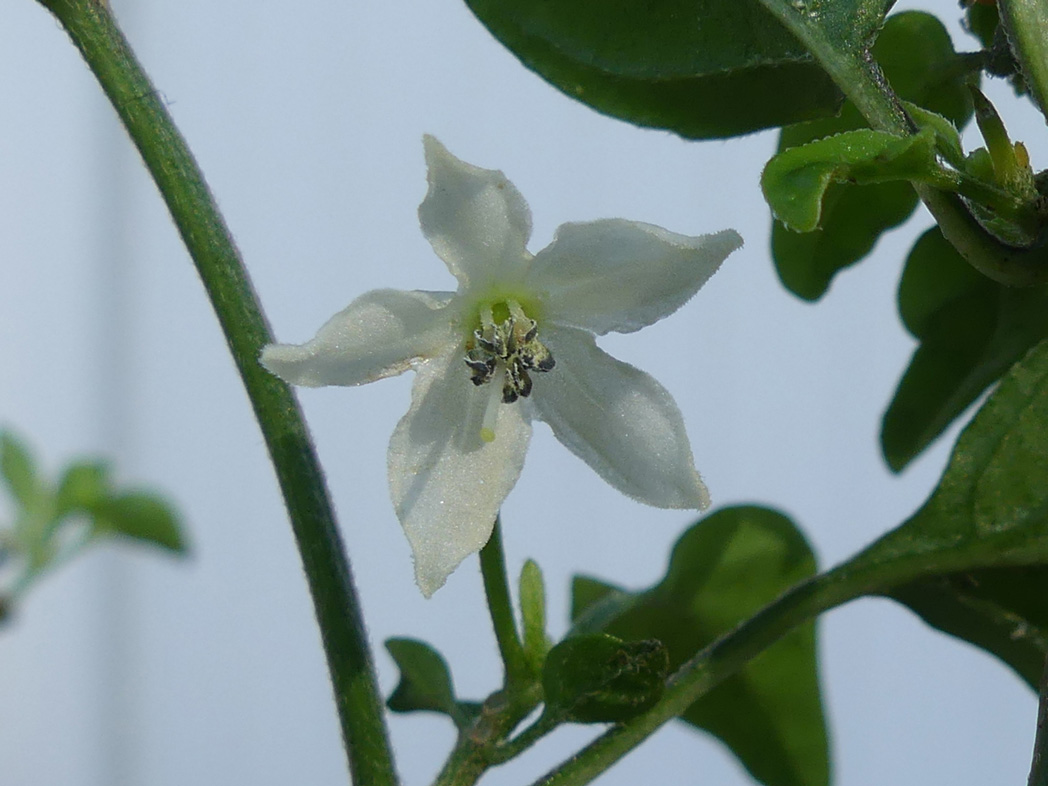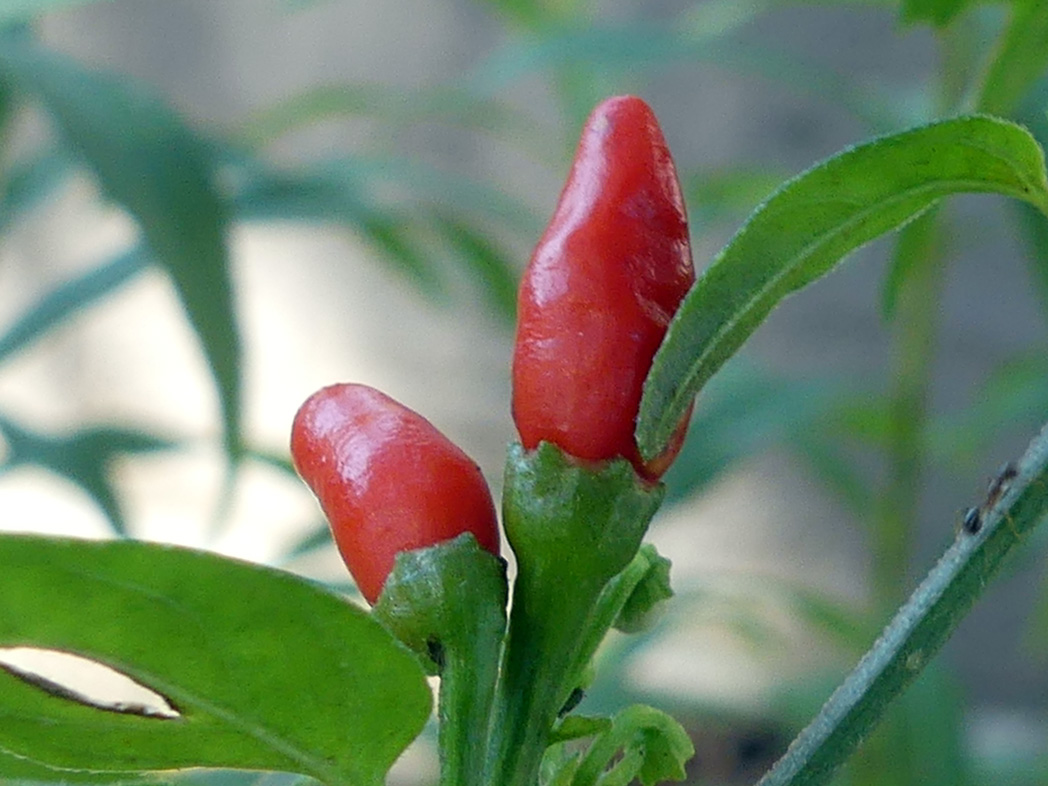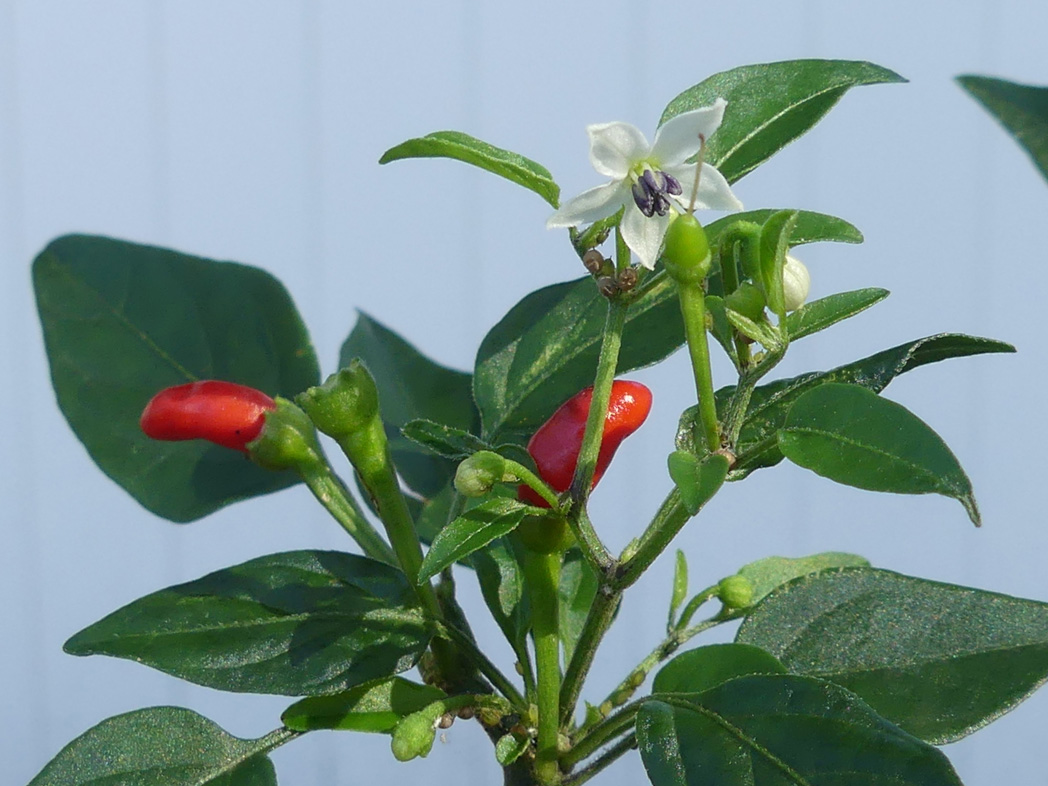Bird pepper
Pictured above: Bird pepper (Capsicum annuum var. glabriusculum) flower and fruit by Stacey Matrazzo. Click on terms for botanical definitions. View post as a PDF
Bird pepper is a lovely evergreen shrub found primarily in coastal hammocks in South and Central Florida. As its name suggests, birds (especially mockingbirds) love its fruit, particularly before they ripen. The plant’s dainty flowers bloom year-round and attract mostly bees.
Bird pepper flowers are tiny (about ¼ inch in diameter), white and five-petaled. They are solitary and tend to nod. Petals are partly fused. The ovary is bright green and noticeable in the center of the flower. It is surrounded by white stamens topped with dark purple anthers. Leaves are dark green and elliptic to lanceolate with entire to slightly undulating margins. Leaves are alternately arranged. Stems may be herbaceous or woody. Fruit is a small, green ellipsoidal berry that turns bright red when ripe.


Bird pepper’s tiny white flower and ripe red fruit. Photos by Stacey Matrazzo
Bird pepper is the only true pepper native to Florida. It is thought to be the wild progenitor of the common culinary pepper, Capsicum annuum, which includes bell, cayenne and jalapeño. The fruit is edible to humans, but be warned — it is hot! On the Scoville scale, it typically measures between 50,000 and 100,000 units, but some have been documented at over 1,000,000 units. That’s hotter than a habanero!
Family: Solanaceae (Nightshade family)
Native range: South Florida, some central peninsula counties, Wakulla county
To see where natural populations of Bird pepper have been vouchered, visit florida.plantatlas.usf.edu.
Hardiness: Zones 8B–11
Lifespan: Annual or short-lived perennial
Soil: Moderately moist to dry, well-drained sandy, clay or calcareous soils
Exposure: Full sun to partial shade
Growth habit: 3’± tall
Propagation: Seed,* cuttings
Garden tips: Bird pepper’s small but profuse flowers, dark evergreen foliage and colorful fruit can add year-round interest to a landscape. It is fast-growing, drought tolerant and generally pest free. It can survive cold temperatures, but does not do well with frost or freezing temperatures.
*While the plant can be propagated from seed, the germination rate tends to be low unless the seeds have passed through the digestive tract of a bird.
Plants are available from nurseries that specialize in Florida native plants. Visit www.PlantRealFlorida.org to find a nursery in your area.

